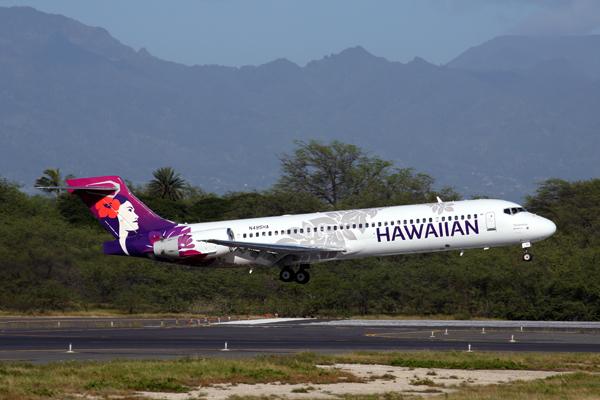Omicron, Border Restrictions Push Back Hawaiian Airlines’ International Recovery

Hawaiian Airlines’ international network continues to remain largely suspended and the airline has pushed back plans to restore international flying.
Hawaiian has not resumed flying to Japan or South Korea, two of its most lucrative international markets. Its international network now comprises only American Samoa (PPG), French Polynesia (PPT) and Sydney (SYD). Hopes that a larger international schedule could be flown in the 2022 first quarter have been dashed by the omicron variant of COVID-19 and border restrictions in Asia-Pacific countries that have not been lifted.
“We are preparing for an increase in international service during the second quarter of the year and a more comprehensive operation in the summer and beyond,” CEO Peter Ingram said during a discussion of the company’s $144.8 million 2021 net loss with analysts.
“The international travel policy changes we have seen since the identification of the omicron variant continue to remind us that the road ahead may not be smooth. But the underlying desire for travel for leisure remains profound, and we will be ready to take advantage of pent-up demand as it materializes.”
Hawaiian senior VP of revenue management and network planning Brent Overbeek said the carrier is “now expecting to fly about 25% of our 2019 international schedule in the first quarter, which is slightly higher than the fourth quarter, reflecting a full quarter of flights to Sydney that resumed in mid-December.”
Hawaiian plans to operate 10-13% lower overall capacity in the current quarter compared to the 2019 March quarter. For the full-year 2022, the carrier has rolled back its prior capacity projection by three percentage points, now planning to operate capacity that is down 3% to up 1% versus 2019. Previously, Hawaiian had planned to operate flat to up 4% full-year capacity compared to 2019.
The 2022 capacity picture is also affected by the delayed delivery of the carrier’s first two Boeing 787s, which were scheduled to be delivered this year, but now will not arrive until the first half of 2023 at the earliest. “The capacity from these aircraft has been removed from our full-year capacity expectation,” Ingram said.
The 787 delivery delays will take a half percentage point out of the airline’s full-year capacity.
Ingram cautioned that a full restoration of Hawaiian’s pre-pandemic international network may not be in the cards. “Internationally, some of the capacity that was marginal pre-pandemic may not return,” he said, adding: “I remain optimistic about the trajectory of our recovery despite the uncertainty that continues to surround our industry. Yes, the path isn't linear, and some of the progress on the international side is [pushed] a little bit to the right, but we continue to make progress on our plan for 2022.”
Hawaiian has already made the decision not to resume service to Brisbane (BNE), Australia in 2022. “While we certainly like flying to Brisbane, enjoy that, we were at the point where we were ready to move on,” Overbeek said. “We don't think the conditions in the short term are going to make sense for us.”
Ingram added: “The Brisbane decision is not a reflection of any level of disappointment with how we've started up in Sydney.”
The timing of the restart of flights to Japan is difficult to predict, Overbeek said. “Based on what we know today, we expect to ramp up our service to Japan in the second quarter, a bit later than we had originally planned, but that's not yet reflected in our currently published schedule,” he explained. “We are working through respective governmental processes for the upcoming summer season around slots and route authorities … There could be a further delay to our restoration of our international network as we remain uncertain about when Japan will fully reopen.”
Hawaiian CFO Shannon Okinaka pointed to “bright spots in the recovery,” noting “the continued robust domestic demand for travel to Hawaii.” She added: “In fact, we ended the [2021 fourth] quarter with a profit for the seasonally busy month of December, where we saw strong domestic demand for the holidays, even without the full resumption of international service.”





